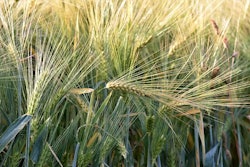China Soy Crush Increases
JCI reported Chinese weekly crush increased 678,000 from last week to 2.2 million tonnes, the highest rate in five weeks.
Cumulative 2020/21 crush is 79.6 million tonnes, 2.8 million above last year which is in line with USDA’s recent changes.
China’s projected crush was reduced from 2 million tonnes in old crop to 94 million tonnes, and down 2 million to 98 million for new crop.
Meal stocks have been dropping from the stronger demand, which gave crush rates room to increase.
Several Chinese ports are facing congestion due to stricter disinfection measures under China's "zero-tolerance" coronavirus policy.
China's economy is reportedly losing momentum as a result of new coronavirus restrictions.
China’s bean carryout is projected to increase to a new record of 31–33 million tonnes, and the government has not sold any of its growing reserves.
FBN’s Take On What It Means For The Farmer: Recent strength in meal sales has turned Chinese crush margins slightly positive. The ongoing impacts from COVID are causing some logistical port constraints that may cause some supply shortages. China has recently returned as a buyer of US beans as they turn to filling new crop needs.

EU Weekly Export/Import Data - July 1 - August 15
EU imports for rapeseed slipped this week to a marginal 12,000 tonnes versus 128,000 last week with the total now just behind last year’s level.
Australia remains the key supplier but Ukraine’s share should be increasing.
Bean imports are trailing the last two years by around 500,000 tonnes.
Wheat exports are at 2.3 million tonnes, up slightly from a year ago.
What sticks out about wheat exports is that South Korea has entered as a big buyer of EU wheat.
Just in over a month, South Korea has taken 407,000 tonnes from the EU; that volume surpasses total imports for South Korea from the EU in four of the last five crop years.
Algeria, who usually is a top buyer of EU wheat, has brought in 307,000 tonnes this crop year versus 478,000 tonnes.
Barley exports total 1.7 million tonnes, which is above the previous two years with Turkey’s imports from the EU strong and China taking around 600,000 tonnes so far, versus 650,000 last year.
FBN’s Take On What It Means For The Farmer: The change in trade is largely reflective of the tight supply situation for some exporting countries, including the US and Canada. We expect to see additional changes in global trade flows as both exporters deal with tight spring wheat, white wheat, and barley supplies. EU wheat quality is not ideal, which is likely prompting South Korea to purchase feed wheat from there versus US white wheat given the lack of competitiveness the US currently has.
FBN Market Advisory services are offered by FBN BR LLC, dba FBN Brokerage, FBN BR and FBN Market Advisory (NFA ID: 0508695)
The risk of trading futures and options can be substantial and may not be suitable for all investors. Past performance is not necessarily indicative of future results.
This is not an offer or solicitation in any jurisdiction where we are not authorized to do business or where such offer or solicitation would be contrary to the local laws and regulations of that jurisdiction, including, but not limited to, persons residing in Australia and Canada.










